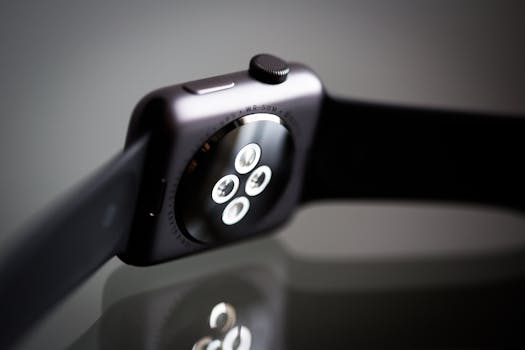The Future of Wearable Tech: Innovations to Watch in 2025
Wearable Tech has been a rapidly growing industry in recent years, with new innovations and advancements being made every year. As we move into 2025, it’s exciting to think about what the future holds for wearable technology. In this article, we’ll explore some of the latest developments and what we can expect to see in the world of wearable tech.
Section 1: Introduction to Wearable Tech

Wearable technology has come a long way since the first smartwatches and fitness trackers were introduced. Today, we have a wide range of wearable devices that can track our fitness, monitor our health, and even control our smartphones. From smart glasses to smart clothing, the possibilities are endless.
One of the key drivers of the wearable tech industry is the increasing demand for health and fitness tracking devices. With the rise of wellness and self-care, people are looking for ways to monitor their physical activity, sleep patterns, and nutrition. Wearable devices have made it easier for people to track their health and fitness goals, and have become an essential part of many people’s daily lives.
Section 2: Latest Innovations in Wearable Tech

So, what’s new in the world of wearable tech? One of the most exciting developments is the introduction of augmented reality (AR) smart glasses. These glasses use AR technology to overlay digital information onto the real world, allowing users to access information, play games, and even control their smartphones with just a glance.
Another innovation that’s gaining traction is smart clothing. Smart clothing uses embedded sensors and technology to track the wearer’s physical activity, monitor their health, and even provide real-time feedback. For example, smart shirts can track the wearer’s heart rate, breathing rate, and other vital signs, while smart socks can track the wearer’s footsteps and distance traveled.
We’re also seeing significant advancements in health monitoring wearables. These devices can track a range of health metrics, including blood pressure, blood glucose levels, and even detect early signs of disease. For example, some wearables can detect irregular heart rhythms, while others can track the wearer’s oxygen levels and alert them to potential health risks.
Section 3: The Future of Wearable Tech

So, what can we expect to see in the future of wearable tech? One trend that’s likely to continue is the integration of artificial intelligence (AI) and machine learning (ML) into wearable devices. This will enable wearables to learn the user’s habits and preferences, and provide personalized feedback and recommendations.
Another area that’s likely to see significant growth is wearable tech for specific industries. For example, we’re already seeing wearables designed for healthcare professionals, athletes, and even soldiers. These wearables are designed to meet the specific needs of each industry, and can provide critical information and insights that can help users perform their jobs more effectively.
Finally, we can expect to see greater emphasis on style and design in wearable tech. As wearable devices become more mainstream, there’s a growing demand for devices that are not only functional but also fashionable. We’re already seeing the rise of luxury wearables, with brands like Apple and Tag Heuer creating high-end smartwatches that are both stylish and sophisticated.
Conclusion

In conclusion, the future of wearable tech is exciting and full of possibilities. From AR smart glasses to smart clothing, health monitoring wearables, and AI-powered devices, there are many innovations to watch in 2025. As the industry continues to evolve, we can expect to see even more exciting developments that will change the way we live, work, and interact with technology.




